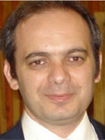Are Small Islands Feasible Prototypes for Future Smart Grids?
By Giuliana Leone, Rossano Musca, Mariano Giuseppe Ippolito, Eleonora Riva Sanseverino, Gaetano Zizzo, Marina Bonomolo, Marco Beccali, Biagio Di Pietra, Francesco Monteleone
Small islands are, in most cases, autonomous energy systems not supplied by the main power grid and essentially based on local diesel generators and renewable energy plants. The energy efficiency issue for such systems has become one of the hottest subjects for the EU and various research organizations worldwide. In the last ten years, ENEA (Italian National Board for New Technology, Energy and the Environment) in collaboration with the University of Palermo has extensively studied both the transition of the traditional power system of such islands towards a smart grid structure and the rational utilization of the local resources for hot water production, air-conditioning, heating and other building services. The article will discuss the main challenges of such a transition.
Small Islands’ Energy System
Are small islands’ energy systems worthy of investigation? The answer is “definitely yes”.
Small islands are characterized by energy systems quasi-fully based on diesel generation, almost obsolete power distribution networks, and, above all, the presence of low-efficiency devices for hot water production and heating/cooling purposes.
Experimental investigations performed in the last years on Lampedusa island (in the extreme South of Italy) have highlighted that hot water production from electric storage water heaters (ESWHs) is responsible for more than 30% of the yearly electricity consumption of domestic end-users and that the daily power peak of the island occurs always in the evening and is mainly due to these devices and, during summer, also to air-conditioners.
In Italy, small islands’ inhabitants do not invest their money for the installation of photovoltaic (PV) or thermal solar systems because of authorization issues due to the preservation of the territory identity and architecture.
The local utilities are experiencing numerous problems due to electricity thefts, faults, transformers failure and environmental pollution. Moreover, in few years the utilities will have to improve the energy efficiency of the electrical power system or it will pay significant penalties introduced by the recently issued so-named “small islands decree”.
All the above factors make small islands energy systems the perfect candidates for an urgent and no more deferrable transformation into more efficient renewable-based smart grids.
The experience gained over the years on the Italian small islands’ energy system through energy bills analysis, meeting with utilities, municipalities and end-users, computer simulations, field measurements and so on, permits to affirm that this transformation must start from the bottom, that is at end-users’ level.
Indeed, the first cause of inefficiency in small islands is the recourse to obsolete technologies, especially at the residential level. Very old water heaters, in service for more than 15 years, have reduced heating efficiency due to limescale deposits on their resistors. Very old air-conditioners work with coefficients of performance that are almost half of those of the new models. The total absence of automation in buildings encourages electricity wastes.
In our previous studies we proposed various solutions for the automation of residential end-users, showing how the control of flexible loads s is able to reduce the daily electricity consumption and, at the same time, can bring benefits to the power systems in terms of reduction of power peaks, voltage drops, etc.
By replacing ESWHs with more efficient heat pumps or innovative solar cooling systems, it is possible to reduce the island’s total energy demand and, due to automation and Demand Response, to support the penetration of PV systems.
The availability of new technology at end-user’s level must be accompanied by a modification of the layout and the operation of the power system of the island. The grid will host batteries for managing the new energy flows due to the PV plants. The sizing, the siting and the operation of the batteries could be managed in order to minimize the overall electricity generation cost or the fluctuation of the PV power.
The utility will use a control system based on a multi-layer structure for managing the distributed resources and establishing a continuous stream of communication with the smart prosumers.
The analysis of such an optimistic scenario, however, must consider the stability issue. Indeed, the increase of the share of generators based on power electronics reduces the power system’s inertia. Therefore, the power converters must be able to provide virtual inertia or fast frequency regulation.
Conclusion
We started this article with a question, and we want to conclude in the same way: are small islands feasible prototypes for future smart grids? In our opinion, definitely yes, because:
- EU is imposing new rules for reducing the dependency of small islands on fossil fuels and the implementation of more “green” measures is becoming urgent and no more deferrable.
- The international community is interested in small island’s energy systems, in how to enhance the penetration of renewables, in how to improve the reliability of their electrical power system.
- Considering the described issues for small islands, it seems they are good candidate for applying modern/smart technologies because of the presence of a single society managing generation, distribution, and selling of electric energy and the absence of the TSO that generally imposes specific boundaries on the daily power profile for security or commercial reasons.
- Finally, end-users are asking for new solutions to reduce their energy bills and need guidance for doing the right choices.
Nevertheless, some important issues must be still faced and solved, such as:
- What is the most suitable architecture of the control system for aggregating the distributed resource?
- The promotion of small distributed energy resources is preferable to the installation of few concentrated plants?
- What is the most suitable layout of the smart distribution grid?
The previous questions show that the work that must be done for creating smart small islands is still hard.
For a downloadable copy of October 2019 eNewsletter which includes this article, please visit the IEEE Smart Grid Resource Center.

Giuliana Leone (S’90–M’04–SM’08) (M’03-SM’05) is post-doc fellow at the Engineering Department of the University of Palermo. She got her post-graduate degree at the Free University of Bozen in 2009 and achieved her PhD in Energetics at the University of Palermo in 2015. Since 2009 she is being working in the field of energy saving in building and she is co-author of several scientific articles.

Rossano Musca (S’13–M’15–SM’17) obtained his M.S. degree and his Ph.D. degree in Electrical Engineering in 2007 and 2010, respectively, from the University of Palermo, Italy. From 2011 to 2017 he was working with Busarello + Cott + Partner AG as responsible of the Dynamic Analysis module of NEPLAN. Since 2018 he is Post Doc Fellow at the Engineering Department of the University of Palermo. His current research interests include power systems design, frequency regulation and stability analysis.

Mariano Giuseppe Ippolitoa (S’13–M’15–SM’17) received the Doctor degree in Electrical Engineering in 1990 (magna cum laude) and the Ph.D. in 1994 from the University of Palermo (Italy). Since 1995 to 2001, he worked as an Assistant Professor and Research Collaborator of the Power System Group at the Department of Electrical, Electronic and Telecommunications Engineering, Chemical technologies, Automation and Mathematical models (DIEETCAM) of the University of Palermo. He entered in service at the University of Palermo as Associate Professor in 2001. Now he is Full Professor of Power Systems at the Department of Engineering, where he has been teaching Fundamentals of Power Systems from 2000 to date and Power Transmission Systems from 2005. Instructor at several Master Courses (post grade) organized by the University of Palermo in 2006 and 2011. He was tutor professor of numerous Ph.D. students.

Eleonora Riva Sanseverino (S’13–M’15–SM’17) graduated in Electrical Engineering in 1996 and received her PhD in February 2000 from the University of Palermo. After a short period as a permanent researcher at the Palermo branch of the High Performance Network Calculation Institute (ICAR) of the National Research Council, she passed the Associate position national selection in 2002. She entered in service at the University of Palermo as Associate Professor in 2002. In 2012 she qualified as full professor in the sector 09/E2, electrical energy systems. Since 2012, every year, she is invited professor in the industrial and international PhD school at Aalborg University, DK. At the University of Palermo, she teaches ‘Smart grids’, ‘Power components and systems’ and ‘Home and Building automation systems’.

Gaetano Zizzo (S’13–M’15–SM’17) is Assistant Professor at the Engineering Department of the University of Palermo. He got his M.Sc. and Ph. D. degrees in Electrical Engineering at the University of Palermo in 2002 and 2006, respectively. Since 2007 he is working with the Power System group of the Engineering Department at the same University and in 2014 he qualified as associate professor in the sector 09/E2, electrical energy systems. He teaches “Power Systems: components and installations” for the students of the Bachelor Course in Electrical Engineering and “Power Electronics” for the students of the M. Sc. Course in Electrical Engineering. He is currently serving as Associate Editor for IEEE Access and as Secretary of the IEEE Italy Section.

Marina Bonomolo (S’13–M’15–SM’17) was born in Palermo, Italy, in 1987. She received the master’s degree in Architecture in 2013 and the Ph. D. degree in Energy and Information Technology in 2017 from the University of Palermo. She worked with architects as a specialist on projects for public and private lighting and architectural design. She has co-authored books, papers on scientific journals, and conference proceedings. Her field of research is outdoor and indoor lighting, visual comfort, smart cities and smart buildings, day lighting performance, and lighting control systems. Currently she is Post Doc Fellow at the Engineering Department of the University of Palermo.

Marco Beccali (S’13–M’15–SM’17) was born in Palermo, Italy, in 1967. He received the Ph.D. degree in energy and environmental technologies in 1994. He was a Civil Engineer in 1991. He was a Researcher at Politecnico di Milano in 1998. He is currently a Full Professor of Applied Physics and HVAC Systems with the University of Palermo, Palermo, Italy. He has authored more than 190 papers in scientific journals and conference proceedings. His main research interests include renewable energy systems implementation and diffusion, urban energy planning, building physics, thermal comfort techniques and strategies, and life cycle assessment of RE technologies. In the last fifteen years, he has been working mainly on solar heating and cooling systems, especially in open cycles for air conditioning.

Biagio Di Pietra (S’13–M’15–SM’17) received the M.Sc. degree in electrical engineering and the Ph.D. degree in technical physics from the University of Palermo. He has been a Researcher with a permanent contract at Italian National Agency for New Technologies, Energy and Sustainable Economic Development since 2004. His current research interests include building model, electric grid, and district heating energy efficiency, solar thermal plants, and electric storage energy efficiency.

Francesco Monteleone (S’13–M’15–SM’17) received the M. Sc. Degree in Electronic Engineering from the University of Palermo. Currently he is working with ENEA - Italian National Agency for New Technologies Energy and Sustainable Economic Development in Palermo. He is involved in the research on small islands, renewable energy sources and smart building. He is authors of several technical reports and scientific papers.
To have the Bulletin delivered monthly to your inbox, join the IEEE Smart Grid Community.
Past Issues
To view archived articles, and issues, which deliver rich insight into the forces shaping the future of the smart grid. Older Bulletins (formerly eNewsletter) can be found here. To download full issues, visit the publications section of the IEEE Smart Grid Resource Center.




